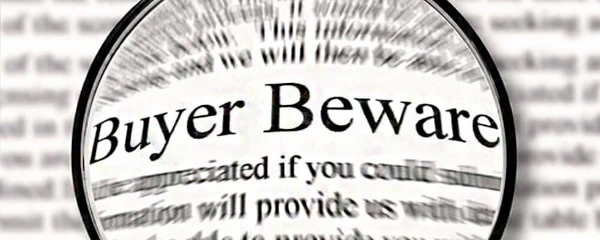 "If it is illegal for me to have on my vehicle, how come they are selling it to me at the store?" This question is common in response to corrective action taken after inspecting an illegally equipped vehicle at the roadside. In some cases the question is asked in an attempt to deflect responsibility, and in others it is asked simply because the driver trusted the retailer. Buyer Beware!
"If it is illegal for me to have on my vehicle, how come they are selling it to me at the store?" This question is common in response to corrective action taken after inspecting an illegally equipped vehicle at the roadside. In some cases the question is asked in an attempt to deflect responsibility, and in others it is asked simply because the driver trusted the retailer. Buyer Beware!

Retail Stores
About two thirds of a page was devoted to vehicle dress up items in the sale flyer of one of our local automotive businesses last week. A number of the items shown are not legal to install or use on vehicles operated on B.C. highways.
There was no mention of this in the flyer. Buyer Beware!
On-Line Vendors
A visit to on-line retailers finds a wealth of items for sale intended for automotive use. Worse still, some of these items are products that conform to standards that have been modified so that they no longer conform or bear counterfeit approval markings. Buyer Beware!
The Law
Section 222 of the Motor Vehicle Act is meant to provide some protection for the consumer. It says:
A person must not sell, offer for sale, expose or display for sale or deliver over to a purchaser for use a motor vehicle, trailer or equipment for them that is not in accordance with this Act and the regulations.
This legislation is very broad and is limited only by the phase "for use." As long as the vehicle or trailer is being sold for parts or rebuilding and the equipment items are meant to install on a vehicle not used on roads, it's legal to sell.
Division 8 of the Motor Vehicle Act Regulations adds a few more detailed restrictions on some equipment kept for sale. Vendors of new or used motor vehicles and trailers must not sell vehicles that are not properly equipped. Light bulbs and turn signals must also be approved types.
Buyer Beware!
At best, the purchaser of parts at the retail level may find a warning similar to "check with local laws prior to use." This is often on instructions, in tiny print, sealed inside the packaging or somewhere on the website not directly referred to in the item listing.
Do not rely on sales people for advice on legality as they generally do not have the necessary knowledge to answer your questions reliably.
Making the Safe Choice
Confused about how to choose? I'm not surprised. The easy way to decide on a replacement is to insist on the equivalent of the Original Equipment Manufacturer's (OEM) part. When the salesperson tells you that it is, you have some legal recourse if it turns out not to be.
If you want anything else, it's up to you do research carefully before you use it.
Share This Article
I do not know why over rescent years there has not been a crackdown on these raised suspension 4x4s. In the area I live, Trail, Rossland and Castlegar there are many of these units. I mentioned before that oversised tires, no splash guards, tires out past the wheel wells, headlights blinding to on coming traffic, and many with driving lights on light bars on the cab roofs without covers and the list goes on. I have talked to MVI at the scales and it is concern they have, but between them and the RCMP these vehicles still travel our highways and not a thing is being done. I know for a fact at a safety check these units would not pass inspection. I have over the last few months written down the make, colour and licence numbers of at least two dozen of these vehicles and soon I will drop into the Local RCMP detatchment in Trail and present them with this list and ask why something is not being done. I have a feeling that I may be wasting my time.
Great articles, Richard Migneault, Rossland,B.C.
- Log in to post comments
- Log in to post comments

Buyer beware